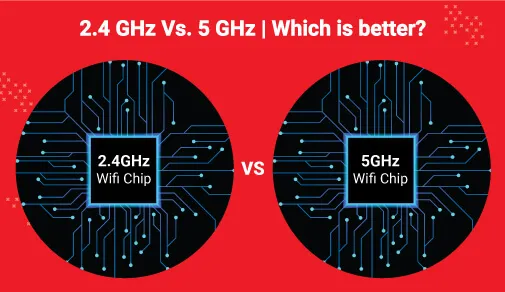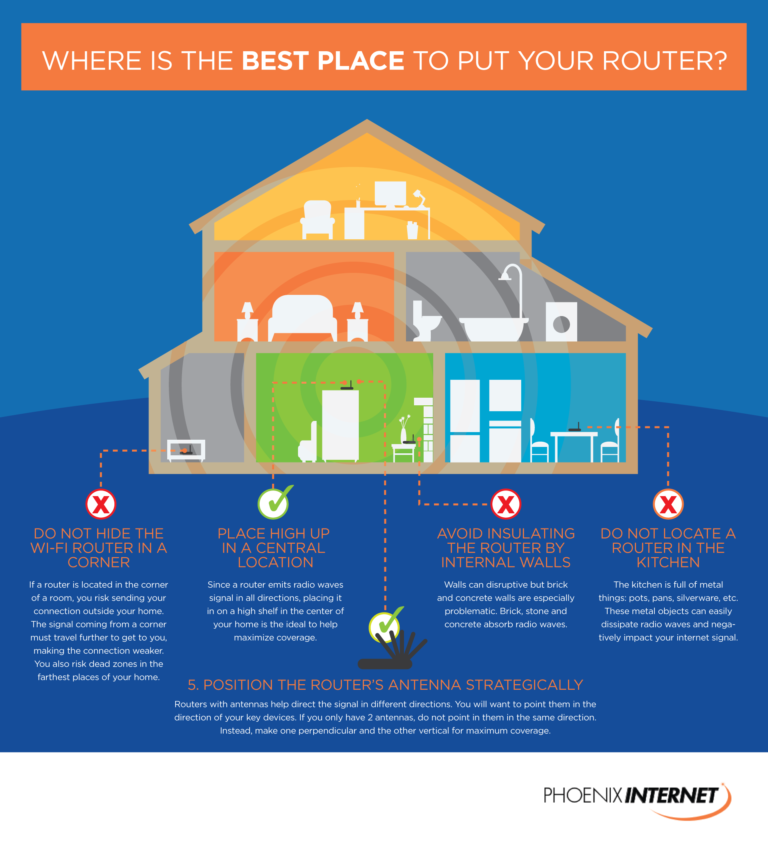Why Does 2.4 GHz Penetrate Walls?
2.4 GHz is a frequency of electromagnetic radiation used for wireless communication. It is used in many wireless communication devices, such as Wi-Fi routers, Bluetooth devices, cordless phones, and wireless headsets. The reason why this particular frequency penetrates walls is due to its relatively low frequency and low power levels. Low frequencies tend to travel longer distances and can penetrate walls and other solid objects better than higher frequencies. Additionally, the low power levels of 2.4 GHz help to reduce interference and enable better signal propagation.
What is 2
.4GHz? 2.4GHz is the frequency of electromagnetic radiation emitted by a variety of electronics and devices, such as Wi-Fi routers, Bluetooth headsets, and cordless phones. It is the most common frequency used for wireless communication, and it is most commonly used for short-distance, low-power applications. The reason why 2.4GHz penetrates walls so easily is because it has a longer wavelength, which gives it the ability to travel further than other frequencies. This makes it ideal for wireless communication, as it can reach a wider area with fewer power requirements. Additionally, the physical structure of walls can have an impact on the ability of 2.4GHz to penetrate them. For example, walls made of brick and mortar will block the signal more effectively than walls made of wood or sheetrock. Furthermore, the material and thickness of the walls can also affect the signal strength. Ultimately, 2.4GHz is the most common frequency used for wireless communication due to its ability to penetrate walls more effectively than other frequencies. This makes it ideal for short-range applications, like Wi-Fi networks, as it can cover a greater area with fewer power requirements.
4 GHz Penetrate Walls?
Wi-Fi networks are often made up of multiple frequency bands, the most common of which are 2.4GHz and 5GHz. Deciding which frequency band to use largely depends on the use case and the environment the Wi-Fi network is in. One of the main advantages of the 2.4GHz frequency is that it is able to penetrate walls and other materials better than 5GHz.
This is because the 2.4GHz frequency has a longer wavelength than 5GHz, allowing it to pass through obstacles with less interference. This means that a 2.4GHz Wi-Fi network can reach further distances and cover more area than a 5GHz network. This is especially useful in households with multiple levels, as the 2.4GHz network can easily cover the entire house.
However, it is important to note that while 2.4GHz is better at penetrating walls, it is also more prone to interference from other devices that operate on the same frequency, such as cordless phones and microwaves. This can lead to slower speeds and poorer performance. Therefore, it is important to consider the environment and the use case before deciding which frequency band to use.
4 GHz Penetrating Walls
The 2.4 GHz frequency is the most widely used frequency for wireless networking, and understanding why it penetrates walls can help you optimize your network and extend your signal. 2.4GHz signals are able to penetrate walls and other objects because they have a lower frequency than other bands such as 5GHz. This lower frequency allows the signal to travel further and penetrate through walls and other objects more easily.
2.4GHz signals are able to penetrate walls in a variety of ways. First, it has a larger wavelength which allows it to pass through walls and other objects more easily. Secondly, the signal strength of a 2.4GHz signal is greater than that of a 5GHz signal, meaning that it is able to travel further and penetrate through walls more easily.
2.4GHz signals are also able to penetrate walls more easily because they have a longer range. This longer range allows the signal to reach further and penetrate through walls more easily. Additionally, the 2.4GHz frequency is less crowded than other frequencies, so there is less interference and a better signal.
Finally, the 2.4GHz frequency is better suited for penetrating walls because it is less affected by physical barriers. This means that the signal can penetrate walls and other objects more easily and without being weakened by the physical barrier.
Overall, the 2.4GHz frequency is better able to penetrate walls and other objects due to its longer wavelength, greater signal strength, longer range, and lack of interference. Understanding why 2.4GHz signals are able to penetrate walls can help you optimize your network and extend your signal.
4 GHz Can Penetrate
Walls
The 2.4 GHz frequency offers a wide range of advantages for wireless networks, which is why it is one of the most popular frequencies for devices such as laptops, tablets, and smartphones. One of the main advantages of the 2.4 GHz frequency is its ability to penetrate walls and other obstacles, allowing for better coverage throughout the entire home.
But how does the 2.4 GHz frequency manage to penetrate walls? The answer lies in the physics of radio waves. Radio waves are composed of electromagnetic waves that travel at the speed of light, and the 2.4 GHz frequency has a longer wavelength than other frequencies. This means that 2.4 GHz waves can travel further and penetrate walls more easily than other frequencies.
The higher frequency of 5 GHz, on the other hand, has a shorter wavelength and is therefore less able to penetrate walls. While this frequency may be better for streaming applications, its shorter range makes it less suitable for providing coverage throughout the home.
The 2.4 GHz frequency is ideal for most home wireless networks due to its ability to penetrate walls and its longer range. This frequency is an important part of the infrastructure for wireless networks, allowing for better coverage and improved performance.
Common Applications of 2
.4 GHz
2.4 GHz is a widely used frequency band in the world of wireless communication and its applications are far reaching. It is commonly used in wireless routers, Wi-Fi networks, Bluetooth products, cordless phones, and other radio-frequency devices. But why does it penetrate walls so effectively? This article will explore the common uses of 2.4 GHz and explain why it is so effective at penetrating walls.
2.4 GHz is the most popular frequency band for wireless communication due to its ability to travel through walls and other obstacles. This makes it ideal for wireless routers, which are used to create a local area network (LAN) in homes and offices. It is also the frequency of choice for Bluetooth devices, including wireless speakers, gaming controllers, and smartphones. Furthermore, cordless phones also rely on 2.4 GHz for their wireless communication.
The reason why 2.4 GHz is so effective at penetrating walls is because it is a lower frequency than other bands commonly used for wireless communication. Lower frequencies tend to have longer wavelengths, which means they can travel further and pass through objects more easily. This is why 2.4 GHz is the frequency of choice for so many wireless applications.
In conclusion, 2.4 GHz is a popular frequency band used in many wireless applications due to its ability to penetrate walls and other obstacles. Its low frequency and long wavelength make it an ideal choice for wireless routers, Bluetooth devices, and cordless phones. The effectiveness of 2.4 GHz is one of the reasons why it is so widely used in the wireless world.
4 GHz Penetrating Walls
When it comes to wireless connections, 2.4 GHz is the most common frequency used, and it is known for its ability to penetrate walls and other obstacles. But why is this the case? What makes 2.4 GHz signals so special that they can pass through walls and other materials that would usually block other frequencies?
To understand this, we must first understand the nature of radio waves, which are electromagnetic waves that have different frequencies and wavelengths. The higher the frequency, the shorter the wavelength. 2.4 GHz, which falls in the microwave band, has a shorter wavelength than other frequencies, and this makes it easier for the waves to pass through walls and other obstacles.
In addition, 2.4 GHz is also less likely to be absorbed and reflected by obstacles. This is because the frequency is lower, and the energy is spread out over a larger area, making it harder for the radio waves to be absorbed or reflected.
Finally, 2.4 GHz signals are also less likely to cause interference with other devices. This is because the frequency is lower, which means the signals can coexist with other frequencies without causing problems.
In short, 2.4 GHz is the perfect frequency for wireless connections because it has a shorter wavelength, is less likely to be absorbed or reflected, and causes less interference with other devices. With all of these advantages, it’s no wonder why 2.4 GHz is the go-to for wireless connections.
FAQs About the Why Does 2.4 GHz Penetrate Walls?
1. What is the difference between a 2.4 GHz signal and a 5 GHz signal?
Answer: A 2.4 GHz signal has a longer wavelength than a 5 GHz signal, which allows it to penetrate walls and other obstacles more easily. A 5 GHz signal has a shorter wavelength, which limits its range and makes it more easily blocked by obstacles.
2. How far can a 2.4 GHz signal travel through walls and other obstacles?
Answer: The distance a 2.4 GHz signal can travel through walls and other obstacles depends on the type of obstruction and the strength of the signal. Generally speaking, a 2.4 GHz signal can travel up to 200 feet through walls and other obstacles.
3. Does my router’s 2.4 GHz signal cover my entire home?
Answer: It depends on the size and layout of your home. If your home is large and has multiple rooms and floors, your router’s 2.4 GHz signal may not be able to cover the entire space. In such cases, you may need to use multiple routers to ensure adequate coverage.
Conclusion
2.4GHz radio waves are able to penetrate walls because they have a longer wavelength than higher frequency radio waves, which means they have less energy and are less easily absorbed by materials like concrete, stone, or metal. This is why 2.4GHz is the most popular frequency for Wi-Fi and Bluetooth connections, as it can reach farther distances and penetrate through walls more easily than higher frequency waves.





